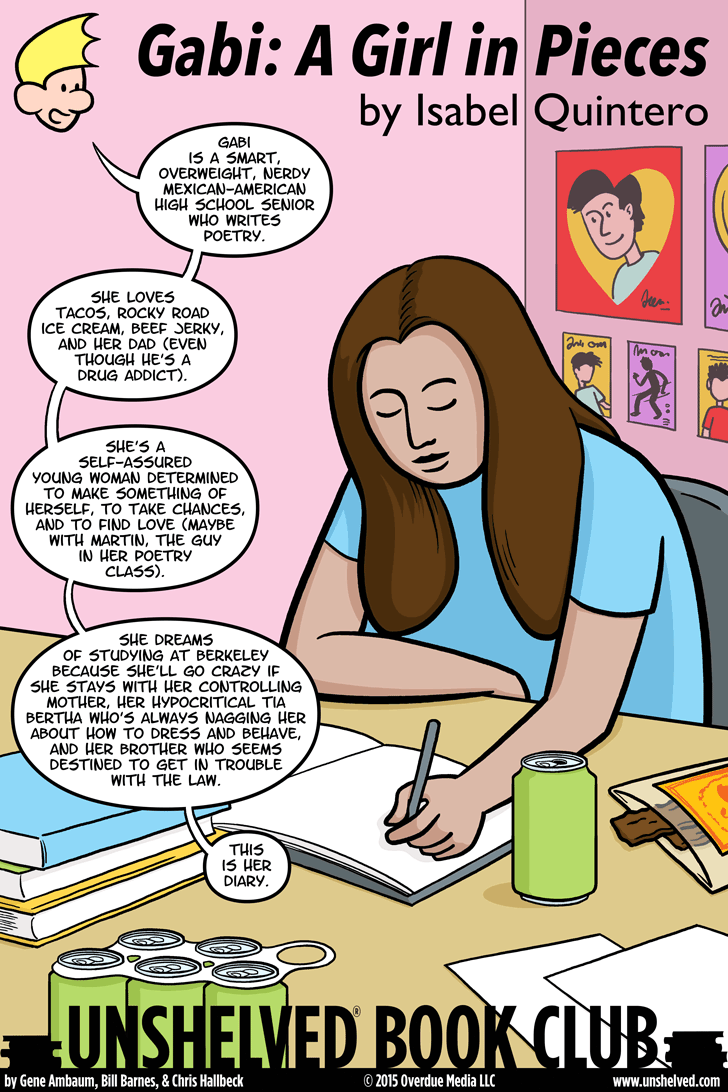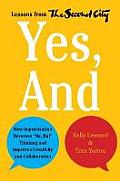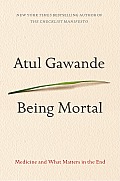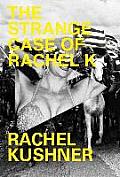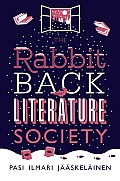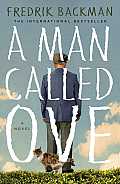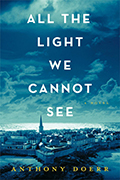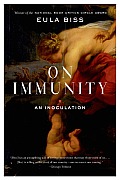Link to this review in the form of a comic strip by geneambaum tagged coming of age
Link to this review by emilyreads tagged nonfiction
Second City executives Leonard and Yorton describe how the principles of improvisation can effect positive change in all manner of groups. Focusing chiefly on big business, the authors offer examples from their work with corporations and organizations where simple improv games have fostered more collaborative leadership, stronger listening skills, and greater empathy within ensembles.
Why I picked it up: Improv exercises were always my favorite part of the summer acting workshops I used to take, and I have a couple friends from high school who are Second City alums (I’m famous adjacent). Applying those ideas to business or organizational life seemed like a “duh, of course that would work” idea.
Why I finished it: Although I wished for a few more specific descriptions of the games and exercises employed (gotta protect the intellectual property, I understand), I was constantly thinking of ways to use these improv ideas in my current organizations. Why couldn’t we play Gibberish on a church vestry retreat, forcing each other to interpret meaning from tone and gesture alone? Wouldn’t it be awesome if our local arts board regularly played Follow the Follower so the photography people and the music folk might finally pay attention to each other and find connections?
It’s perfect for: My professor from my Creativity, Innovation, and Entrepreneurship class in business school. He is not a funny guy, but he’s all about divergent thinking, rapid prototyping, and the benefits of failure, all of which are critical to business and improv. I’d love to see this book’s exercises offered to each class of socially awkward engineers and puffed-up consultants who walk through the b-school doors: they’d have far greater effects than another hour of intellectual flexing during discussion sections.
Link to this review by davidtomashek tagged literary
When his lover runs out on him, Destiné comes to the realization that he will move Heaven and Earth to get her back. Before he can act, however, the Earth moves on its own. This is Haiti on January 12, 2010, and the heart of the nation is demolished by an earthquake. In the chaos that follows, neither Destiné, his lover Natasha, nor her husband, the President of Haiti, will ever be the same again.
Why I picked it up: There was a cover blurb quoting Junot Díaz, who is well known for his stories about the Dominican Republic. He said that Léger shows Haiti “in all of its stupendous, beautiful, tortured complexity.”
Why I finished it: The book covers a lot of ground, from the history of Haiti and its relationship to the rest of the world (Léger calls it a “Republic of NGO’s”) to the depths of love, desire, duty, and spirituality in the relationships between the three main characters.
Readalikes: A great book full of humor and tortured sexual relationships told from a Haitian viewpoint is Heading South by Dany Laferrière.
Link to this review by silver tagged nonfiction
Dr. Gawande has been a surgeon at a big hospital for more than ten years. He finds that doctors, and especially patients and their families, aren’t able to realistically see when patients are reaching the end of their lives. And even if they can see the end, patients and their families continue seeking painful, invasive treatments that do little except make the patients’ deaths more miserable.
Using his experiences as a surgeon, along with those of patients, their family members, and his own relatives, Dr. Gawande illustrates how the end of life for those of us in the developed world became so different from what our ancestors experienced, and from what people living in underdeveloped countries go through. Dr. Gawande thinks we each need to clearly understand what living means to us so that we know when to say that we’ve had enough medical interventions, and can spend whatever is left of our lives with our families instead of in the hospital. He believes the role of physicians and healthcare providers needs to change to accommodate this, that they need to explain medical facts plainly instead of quoting statistics and numbers. He also shows that people who are disabled or impaired due to age want to take responsibility for themselves and live their lives, to take risks like healthy people.
Why I picked it up: I loved his previous book Complications: A Surgeon’s Notes on an Imperfect Science.
Why I finished it: When my husband Gene’s grandma, Helen, was alive, my family visited her often at the nursing home where she lived for her final years. Vascular dementia gradually made her lose her memory, and her last year was on a very slow, steady decline, both mentally and physically. In her last months Helen lost her appetite and had to be coerced into eating. Each time we visited, Gene and I talked about what it meant to be alive and how we will want to be treated at the end of our lives. Dr. Gawande had me asking the same questions again: Did his grandma feel joy at being alive? Were we helping her or harming her? Why were we stopping her from dying as she wanted to? Why couldn’t she stop eating if she was clearly ready to die?
It’s perfect for: My sister-in-law, Traci, a new nurse who has a hard time dealing with death. She really needs to get ready for what she’s about to experience at the hospital, from people who fear the end to others who are eager for it.
Link to this review by wally tagged literary • historical fiction
This three-part novel follows a Columbus-like explorer who persuades his queen that the world might be pear- or violin-shaped, or shaped like a woman’s breast. After she gives him money for his voyage, he ends up finding Cuba. The second part takes up after World War II in Havana, where a faith healer’s illegal radio broadcasts compete with those of rebel bandits for the attention of the populace. The last part tells the story of Rachel K, an exotic dancer from Paris, and how she entertains shady men in a postwar Havana nightclub, including a former Nazi officer who has as much to hide from her as she does from him.
Why I picked it up: I’d heard good things about Kushner’s debut novel, Telex from Cuba. This short novella seemed like a perfect introduction to her work.
Why I finished it: Kushner is my kind of writer: quick and poetic, but with a gritty sensibility that doesn’t flinch away from the postwar realities of Cuba, such as the nonchalant attitude about violence that one rich American woman expresses right before a bomb goes off outside the nightclub. One of Rachel K’s lovers is President Prio, who one minute is slurping champagne and the next huddling with his family in the Dominican embassy after a coup.
It’s perfect for: Julie, who would enjoy the descriptions of Havana and Cuba. She’d also like the tense conversational dance between Rachel K and the Nazi officer, and how little they reveal of their histories to one other.
Link to this review by wally tagged literary • mystery
Ella, a young literature teacher in the small Finnish town of Rabbit Back, discovers a copy of Crime and Punishment that is clearly wrong. When the local librarian hides the book in the back of the library with the lame explanation that it’s a misprint, Ella knows there’s more to this story. But before she can investigate too deeply, she is amazed that she is invited to be the long-awaited tenth member of the Rabbit Back Literature Society, a group of local authors who have all been groomed by the reclusive, world-famous Laura White. White formed the group decades ago and taught the budding authors about Finnish mythology and the art of writing. Almost all of them went on to successful careers, but Ella discovers there was an original tenth member. When she learns he died young, and was either envied or forgotten by the other authors, she digs deep to find the truth about him, although it may be too strange to believe.
Why I picked it up: The title alone intrigued me, but I was also interested in reading a Finnish author who seems to be writing novels comparable to Neil Gaiman’s.
Why I finished it: This book was utterly weird, with a lot of loose ends that are never resolved but hang together as a whole. Laura White vanishes when a freak snowstorm enters her house through an open window, right as the party to welcome Ella to the society begins. Ella’s own father dies early in the novel as he speaks of strangely moving shadows and statues in the back garden. A local pond seems to suck people and cars into its unfathomable depths. And Rabbit Black members rarely speak to each other except to play The Game, a ruthless, sodium pentathol fueled question-and-answer session that stirs up dark memories and provides meat for stories.
It’s perfect for: Rachel, who will enjoy the strange group of authors, especially as Ella begins to believe that they may have murdered the original tenth member to get their hands on his precious notebook and its fantastic ideas.
Link to this review by darcy tagged literary
Ove is an unhappy man who likes things just so. He meets the new neighbors when they back into his mailbox on moving day. Not only were they breaking the rules by driving in the residential area of the row houses, the wife is a foreigner. Despite their many differences, an unlikely friendship forms and brings something resembling happiness to cranky old Ove.
Why I picked it up: My book group chose this as one of its books. I was excited to read something by a Swedish author besides Stieg Larsson’s books.
Why I finished it: I loved its simple and forthcoming narrative style, which told a deep, rich story without over describing the scenery. Throughout the novel, Ove tries a variety of ways to commit suicide, but is foiled every time by faulty equipment or interruptions. After a failure he doesn’t waste time; he just picks himself up, dusts himself off, and does something nice for someone.
It’s perfect for: Ellis, who will enjoy that Ove was booted off the residents’ association board that he started. Ellis herself got into a tangle with some church ladies once, over a holiday brunch, and still has a few choice things to say about them.
Link to this review by diane tagged historical fiction
Marie-Laure has not had an easy life. Her mother died in childbirth, at age six she went blind, and when she was twelve the Nazis occupied her hometown, Paris. Her father is keeper of the keys at Paris’ Museum of Natural History, and she is sent away from the city with him with what might be the museum’s most valuable treasure, a cursed jewel called the Sea of Flames. They settle in Saint-Malo, a walled city on the French coast where her crazy great uncle Etienne lives with his housekeeper, Madame Manec. Meanwhile, in a mining town in Germany, Werner and his sister are growing up in an orphanage. After Werner’s skills in math and science come to the attention of the Nazis, he is recruited into the Hitler Youth and later assigned to a military unit that tracks radio signals at the front.
Why I picked it up: I love historical fiction and this title kept appearing on many best books lists in 2014. When I realized it was the story of children caught up in the war, I was hooked.
Why I finished it: Doerr puts me right in the heart of World War II Europe. The story shifts narrative focus in both time and place, changing from Marie-Laure’s story to that of Werner, from 1944 to 1939 and back again. Through it all Doerr weaves the myth of the cursed jewel and those who seek its magic. The relationship between Marie-Laure and her father is tender and touching, as is the relationship between Werner and his sister. Marie-Laure is a strong young woman who triumphs against all odds, and the way the two parallel storylines converge is skillful and suspenseful.
It’s perfect for: My mother-in-law, Sue, who likes historical fiction and character-driven novels that are more about the people than the action. Even the minor characters in this book have memorable personalities and impact the story. I think she’ll particularly love Madame Manec, the stalwart, crusty housekeeper who’s been caring for Etienne for over twenty years and embraces Marie-Laure as her own.
Link to this review by emilyreads tagged essays • history • nonfiction
Eula Biss, a Northwestern University professor and former Guggenheim fellow, offers a series of interconnected essays on the history, benefits, risks, and controversies surrounding immunity and vaccination. From early smallpox variolations to the twenty-first century autism panic, Biss explores the public-health benefits of vaccination, common misconceptions about the human immune system, and her own shifting feelings as a mother facing a long schedule of recommended shots for her newborn son. Neither a polemic nor an apologia, this is a smart, thoughtful look at a complicated subject.
Why I picked it up: It made Publishers Weekly’s Best Books of 2014 list and looked intriguing.
Why I finished it: The book is short but dense (around 160 pages, with another forty of source notes), yet never veers into academic navel-gazing. If I were a commuter, these bite-size chapters would carry me through a week’s worth of train rides.
It’s perfect for: My friend Miranda, a college sophomore majoring in neuroscience with an eye toward med school. Biss not only wades into the political waters surrounding vaccination, but also the psychological barriers and shortcuts human beings have to make sense of a practice that, on its face, seems counterintuitive to everything else we know about health. I’d be interested in Miranda’s take on the uneasy intersection of individual and collective well-being.

